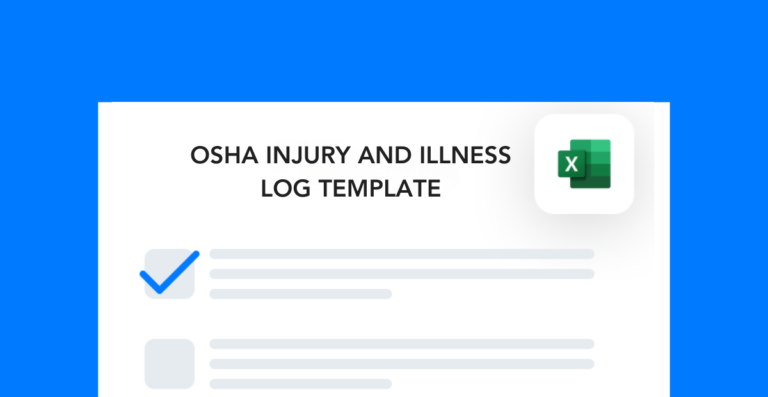OSHA inspectors are well-trained and experienced industrial hygienists and safety professionals.
Their primary goal is to ensure that businesses remain compliant with OSHA requirements. During the inspection process, they also aim to help eliminate hazards and prevent workplace injuries, illnesses, and deaths.
And since you won’t always know when it’ll happen, it’s important to know what to expect during an OSHA inspection and how to prepare.
Reasons for OSHA inspections
OSHA has jurisdiction over approximately 7 million worksites. Its inspection resources tend to focus on the following hazardous workplaces (in order of priority):
Imminent danger situations: These are hazards that may cause death or serious physical harm. OSHA compliance officers require employers to correct these hazards immediately or remove endangered employees.
Severe injuries and illnesses: When OSHA receives report of a workplace death, inpatient hospitalizations, amputation, or loss of an eye, they may show up to investigate further.
Worker complaints: Employee allegations of hazards or violations receive high priority.
OSHA may also receive referrals from many sources, including:
- Federal, state, or local agencies
- Individuals
- Organizations
- Media outlets
These referrals may lead to inspections as well.
Targeted inspections: These are aimed at specific high-hazard industries or individual workplaces that have high incident rates.
OSHA also conducts follow-up inspections to check that businesses are adhering to previous recommendations and requirements.
On-site inspection process
To better understand the on-site inspection process, review each step below.
Pre-inspection: Before OSHA shows up, they’ll prepare by researching the worksite’s history, reviewing the operations and processes, and what standards apply. They may also gather testing instruments to measure potential hazards (ex. noise dosimeter).
Opening conference: After CHSOs arrive, they’ll hold an opening conference. During this time, the compliance officer will explain why OSHA selected the workplace for an inspection and describe the scope of the inspection, walkaround procedures, employee representation, and employee interviews.
The employer then selects a representative to accompany the compliance officer during the inspection. Keep in mind that the CHSO will speak with employees during the inspection without the company representative present.
Walkaround: Next, the inspection begins. The CHSO and the employer representative walk through different areas of the facility and look for hazards that could lead to injury or illness.
During the walkaround, compliance officers may point out violations for the site to correct immediately. While the law requires the inspector to cite these types of hazards, prompt correction is a sign of good faith on the part of the employer.
Compliance officers try to minimize work interruptions during the inspection and will keep confidential any trade secrets observed. They’ll also ask to check the documentation for specific items.
Closing conference: After the walkaround, there’s a closing conference to discuss the findings. The compliance officer discusses possible courses of action an employer may take to contest citations or proposed penalties. They’ll also discuss consultation services and employee rights.
When an inspector finds violations of OSHA standards or serious hazards, he or she may issue citations and fines. OSHA must issue a citation and proposed penalty within six months of the violation’s occurrence. Citations describe OSHA requirements that were allegedly violated, list proposed penalties, and give a deadline for correcting the alleged hazards.
Violation categories: OSHA violations fall into the following categories:
- Willful
- Serious
- Other-than-serious
- Failure to abate
- Repeated
Fines for these violations range from approximately $16,550 per violation (serious, other-than-serious, or posting requirements) to $165,514 (willful or repeated violations).
While settling a penalty, OSHA may reduce penalties for small employers and those acting in good faith. For serious violations, OSHA may also reduce the proposed penalty based on the gravity of the alleged violation. However, OSHA does not make good faith adjustments for alleged willful violations.
Appealing violations: OSHA’s primary goal is correcting hazards and maintaining compliance rather than issuing citations or collecting penalties. Employers can request an informal conference with the OSHA Area Director to discuss citations, penalties, abatement dates, and any other information pertinent to the inspection.
The agency and the employer may work out a settlement agreement to resolve the matter and eliminate the hazard. Alternatively, employers have 15 working days after receipt of citations and proposed penalties to formally contest the alleged violations and/or penalties by sending a written notice to the Area Director.
OSHA forwards the contest to the Occupational Safety and Health Review Commission (OSHRC) for independent review. Citations, penalties, and abatement dates that the employer does not challenge or settle become a final order by the Review Commission.
Documentation to prepare
In addition to the walkaround, the inspector may want to review compliance records and other types of documentation. This review process often takes place during an OSHA inspection, so you’ll need to have them ready to go at all times.
Here are some of the types of documentation that the inspector might want to see:
- OSHA 300 logs
- Employee training records
- Hazard communication documentation (if applicable)
- Safety data sheets
- Safety training materials
Training materials that OSHA may review include confined space, lockout tagout, respiratory protection, and fall protection (to name a few).




